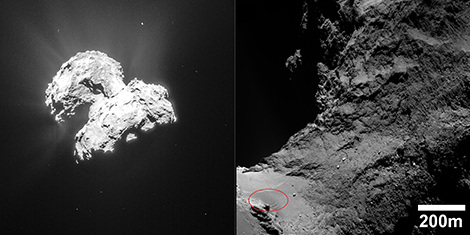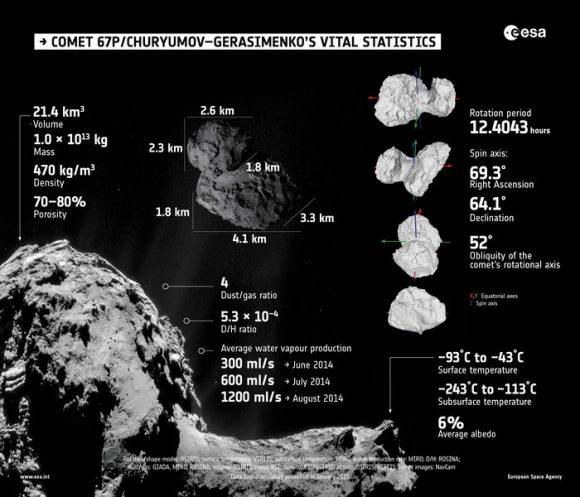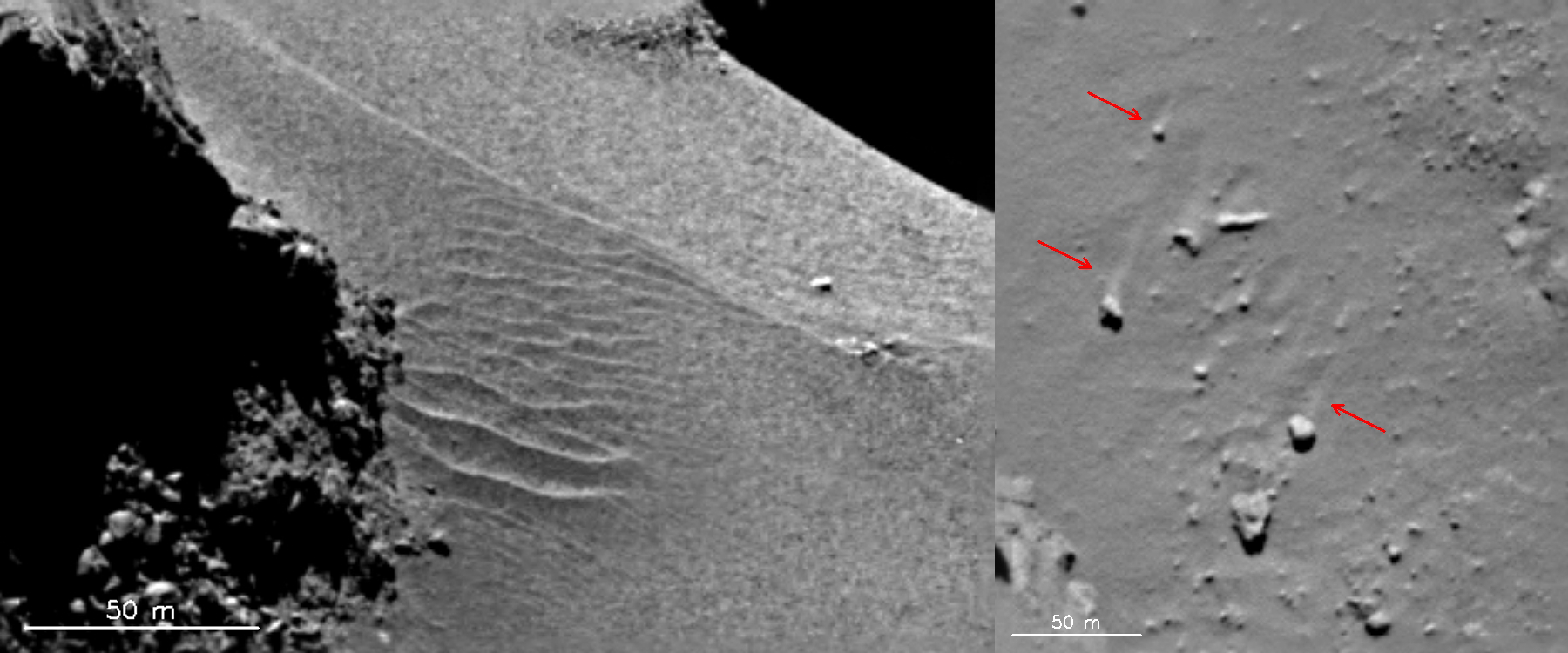The Rosetta mission’s close-up views of the curiously-shaped Comet 67P/Churyumov-Gerasimenko have already changed some long-held ideas about comets. But here’s more: there’s a ‘wind’ blowing across the comet’s surface, creating moving shifting dunes.
“The approach to comet 67P/Churyumov–Gerasimenko by the spacecraft Rosetta has revealed the presence of astonishing dune-like patterns,” wrote Philippe Claudin, of the Institute of Industrial Physics and Chemistry, Paris, France, in his new paper, noting the unusual and unexpected conditions found on Comet 67P.

Images from Rosetta’s cameras revealed the dusty covering of the comet may be several meters thick in places, which was surprising. But even more surprising was seeing active dunes that are changing. The dunes were seen on both of the ‘lobes’ of the comet as well as on the neck that connects them. Comparisons images taken 16 months of the same region shows evidence that the dunes moved, and are therefore active.
Claudin and his team said that the formation of sedimentary dunes requires the presence of grains and of winds that are strong enough to transport them along the ground. However, comets do not have a dense, permanent and active atmosphere like Earth does. Also, Comet 67P’s gravity is so weak – only about 1/50,000 that of Earth’s – that fast moving grains might be ‘launched’ into space.
What could be creating a wind strong enough that not only moved the grains, but also some boulders up to a meter wide?
There is indeed a wind blowing along the comet’s surface, said Claudin, coming from gases that escape from the surface.
Gases escape at ‘sunset’ on the comet, caused by the pressure difference between the sunlit side, where the surface ice can sublimate due to the energy provided by the sunlight, and the night side.
“This transient atmosphere is still extremely tenuous, with a maximum pressure at perihelion, when the comet is closest to the Sun, 100,000 times lower than on Earth,” the team said in a press release. “However, gravity on the comet is also very weak, and an analysis of the forces exerted on the grains at the comet’s surface shows that these thermal winds can transport centimeter-scale grains, whose presence has been confirmed by images of the ground. The conditions required to allow the formation of dunes, namely winds able to transport the grains along the ground, are thus met on Chury’s surface.”

The transportation of dust has created dune-like ripples, and boulders with ‘wind-tails’ – the boulders act as natural obstacles to the direction of the gas flow, creating streaks of material ‘downwind’ of them.
Claudin said this finding represents a step forward in understanding the various processes at work on cometary surfaces, and also shows the Rosetta mission still has many surprises and discoveries in store.
Paper: Giant ripples on comet 67P/Churyumov–Gerasimenko sculpted by sunset thermal wind


Fascinating! I wonder what elemental species we’d find in a scoop full of that comet dust? What are it’s properties? How thick is the covering? Were there radar soundings of that? NOW you’ve got me going! My thanks..
P.S. Found a word processor boo-boo? “…But even more surprising was seeing active dunes that changing.”
~@; )
Thanks Aqua, fixed!
Who would have thought, Sand Dunes on a comet!
Amazing things just keep showing up.